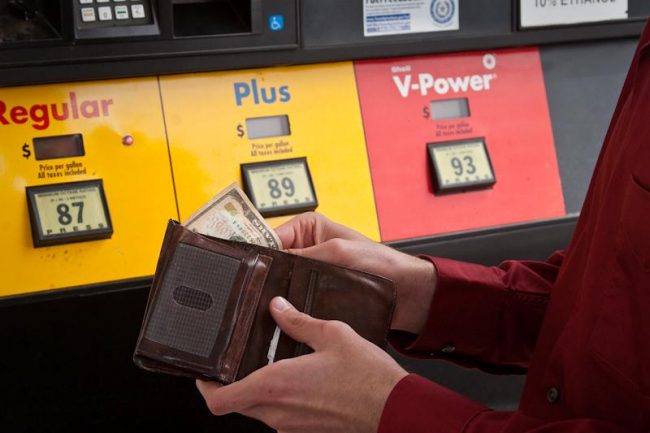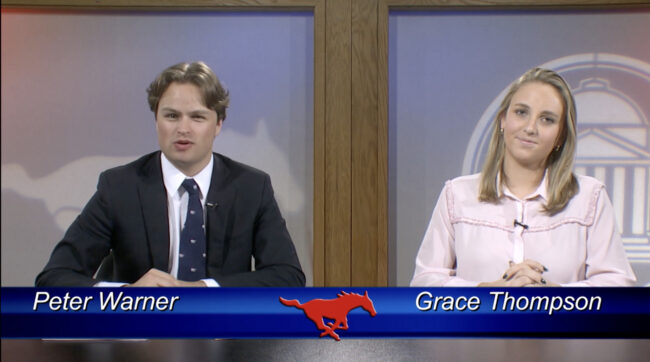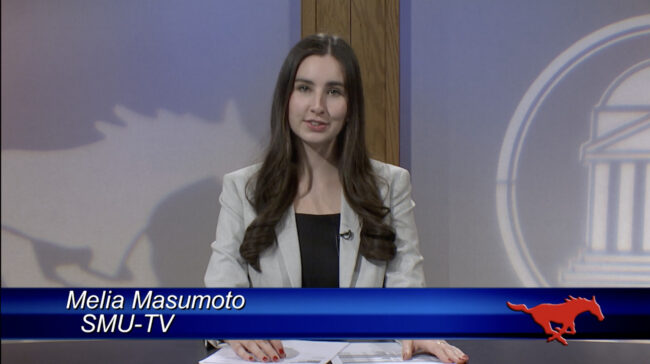
Consumers are feeling the heat from rising gas prices this Spring season, thought to be caused by global demand and tension in the Middle East. (Spencer J Eggers/The Daily Campus)
Ester Henderson uses a lot of fuel.
The 47-year-old Dallas native uses over 40 gallons of fuel every two weeks to fill up her Dodge Ram pickup truck. That’s about the same amount she uses to fill her work’s 18-wheeler … every day.
“It’s hurting everybody, not just us people that are going to and from work. I’m sure it’s hurting businesses and companies that use fuel throughout the day and to operate their business,” she said.
Henderson’s employer – the City of Dallas – said that assumption is spot on.
The City of Dallas spends nearly $22 million on fuel each year, a budget that is set and approved at the beginning of every fiscal year. That $22 million comprised just over one percent of the overall city’s budget, but it was important enough to be mentioned in the executive summary of this year’s city budget.
“It’s pretty volatile, with all the tensions in the Middle East and all the things that go on in the fuel market. It requires us to spend a lot of time keeping an eye on a lot of other moving parts,” said Errick Thompson, the Director of Equipment and Building Services for the City of Dallas.
The U.S. Energy Information Administration (EIA) said the market could get even more volatile in the next few months. Since the first of the year, the price for a gallon of regular unleaded gas rose 58 cents to a national average of $3.87, according to weekly reports from the EIA. Its projections show this increase is just the beginning of the annual spring and summer climb in fuel prices.
Last year, gas prices peaked in May at $3.97 a gallon nationwide. This year, the EIA estimates the national average could exceed $4 per gallon by June.
Thompson said those figures are for general consumers; the City of Dallas pays a slightly lower cost per gallon because it purchases fuel in bulk under a contract agreement. But even with a contract in place, prices still vary.
“We basically pay based on an index price that fluctuates every day so as the market changes, so do our weekly or daily fuel prices,” he said.
A small increase can make a big impact with the city’s volume of fuel usage – 6.7 million gallons each year. That price climb of about 50 cents per gallon could mean an additional $3.4 million to the budget.
According to the Federal Highway Administration, the average American drives 13,476 miles every year. Applying that average to the city’s 4,800 vehicles, the city is supplying fuel for 64.6 million miles of travel.
But Thompson said there are many variables that increase city vehicles’ mileage and fuel consumption such as vehicle size and weight, lengthy operating hours (sometimes up to 20 hours each day), and driving conditions.
Sgt. Stephen Hoyer, fleet supervisor for the Dallas Police Department, said squad cars mainly operate in residential areas, driving with city stop-and-go traffic.
Hoyer said that in-city gas mileage is much lower than the average commuter’s highway drive. In some cases, even highway driving can lead to high fuel consumption.
“When you’re in a car chase, you consume fuel very quickly running at high speeds,” Hoyer said.
For these police activities, and other city operations, cutting back on fuel consumption is simply not an option. Vehicles in the police, fire, sanitation and water departments account for 82 percent of the city’s fuel consumption, but Thompson said those areas are also the most essential.
Take Henderson’s job for example. Those 35 gallons to 37 gallons of fuel just one of the sanitation department’s 18-wheelers consumes on a daily basis are used to pick up brush and other debris from residential areas.
Despite this high fuel consumption, Henderson said her department could simply not be spared.
“It’s a health hazard … the trash has to come up off the ground,” she said.
Since cutting back on fuel consumption isn’t an option, the city is taking a different approach to reducing costs. Over the past two decades the city of Dallas has been moving into alternative fuel.
Of the 4,800 vehicles Thompson manages, 37 percent operate on alternative fuels such as compressed natural gas, biodiesel or hybrid electric.
Thompson estimates these vehicles have saved the city hundreds of thousands of dollars in fuel costs.
“We probably pay…two and a half times more for a gallon of unleaded gas compared to a gallon equivalent of compressed natural gas,” Thompson said.
According to gasbuddy.com, regular unleaded gasoline costs $3.49 per gallon in Dallas, compared to $2.40 for a comparable gallon of compressed natural gas.
In addition to these alternative fuel measures, Thompson promotes simple gas saving tips for all city employees. Messages about carpooling, making fewer trips, removing unnecessary items or extra weight from vehicles, keeping all vehicles well maintained, and avoiding idling are emailed out to entire city staff and hung on posters in fueling centers.
In the next year, the city of Dallas is also stepping up its fuel monitoring system, equipping all city vehicles with technology to gauge each vehicle’s fuel consumption.
“Every time a car or vehicle gets fuel, we’ll be able to get a very accurate odometer reading and we’ll know how many miles that vehicle has traveled and some other information about how its being used,” Thompson said. Despite these conservation measures, Thompson said it is difficult to stay within the annual fuel budget when prices spike unexpectedly.



















